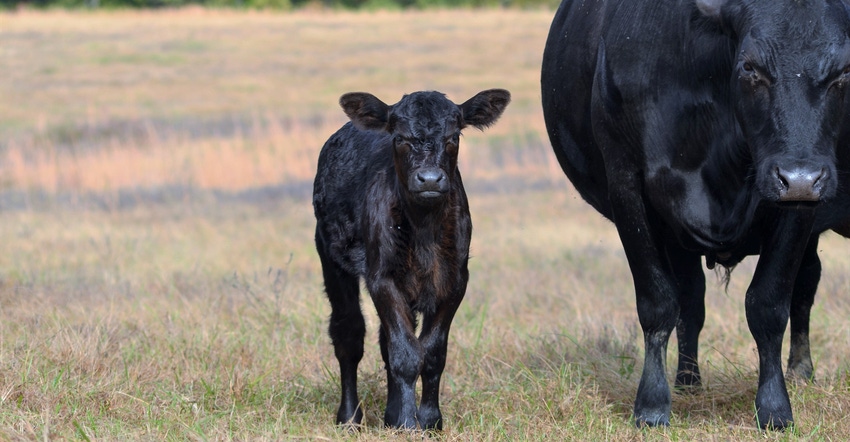June 11, 2020

A new beef cow breeding protocol increases conceptions rates to 72% with fixed-time AI practices.
MU Extension beef reproduction specialist Jordan Thomas says a new 7 & 7 Synch protocol helps improve heat response and pregnancy rates in beef cows. The protocol dubbed 7 & 7 Synch is a treatment schedule that adds seven days to the standard seven-day CO-Synch + CIDR protocol.
Farmers should not confuse this with the “14-day CIDR” protocol, Thomas explains, as it has a very different treatment schedule and use.
AI program overview
The 7 & 7 Synch method improves ovarian follicular maturity before the administration of gonadotrophin-releasing hormone (GnRH), which is typically given at the beginning of an estrous cycle control program, Thomas explains.
The new protocol calls for a treatment with prostaglandin F2a and an intravaginal progesterone insert or CIDR (controlled internal drug release) in advance of GnRH. This enhances the uniformity of cows’ response to the protocol, Thomas says, improving overall control of the estrous cycle compared to standard seven-day CO-Synch + CIDR protocol.
For the past two years, University of Missouri graduate students Rachael Bonacker and Carson Andersen worked in the Thomas Lab developing and evaluating the protocol. Andersen led the large timed-AI field trial, with research results across two states, five operations, 11 cow herds and more than 1,500 cows.
Greater conception rates
The results from a recent large field trial found 82% of cows come into heat before the timed AI service using the protocol 7 & 7 Synch. This compares to 64% of cows in heat using the standard seven-day CO-Synch + CIDR. Cows that come in heat before timed AI generally achieve higher pregnancy rates. “Pregnancy rates with this new protocol are exceptional,” Thomas says.
Pregnancy rates vary depending on whether conventional or sex-sorted semen was used, but pregnancy rates were improved with both semen types using the 7 & 7 Synch protocol.
Using a single fixed-time AI service, 72% of cows on 7 & 7 Synch became pregnant to timed AI using conventional semen. When sex-sorted semen was used, pregnancy rates to timed AI dropped to 52% after 7 & 7 Synch. This compares to pregnancy rates after the standard seven-day CO-Synch + CIDR protocol of 61% with conventional and 44% with sex-sorted semen.
While the pregnancy rate was lower with sex-sorted semen, Thomas says it was still “quite good” for the beef cattle industry. The levels of improvement, regardless of the semen type use, will help beef cow producers. “With the consistency of the results we have seen and the early reports from producers using this protocol,” he says, “we are very comfortable with this as a new recommendation for broader use.”
“We are just really excited to share a new protocol that can benefit producers across the country,” Andersen says. “Nothing is more rewarding than seeing research that can increase profitability and productivity get implemented on the farm.”
The Thomas Lab works to improve the profitability and sustainability of beef cattle production systems through Extension, education and applied research. For more information, contact Thomas at [email protected] or connect with the Thomas lab’s “Mizzou Repro” pages on social media.
Source: University of Missouri Extension, which is solely responsible for the information provided and is wholly owned by the source. Informa Business Media and all its subsidiaries are not responsible for any of the content contained in this information asset.
You May Also Like




